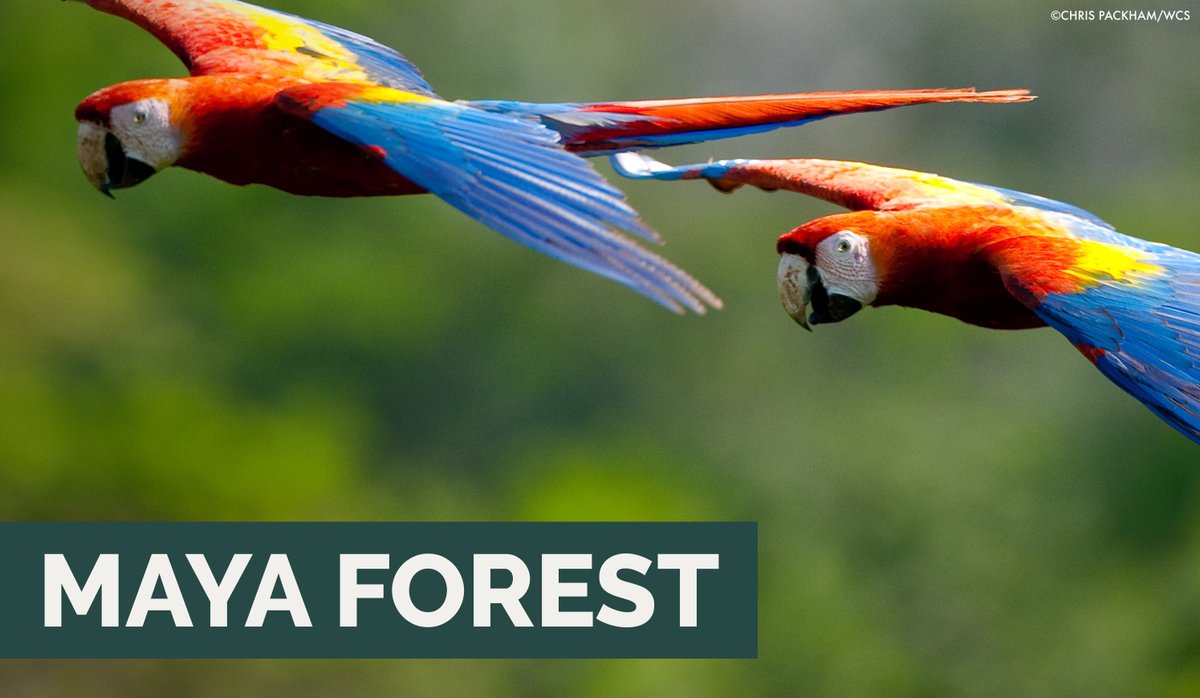THREAD: Mesoamerica’s #5GreatForests are critical for wildlife, carbon sequestration, plus clean air, water, and food security to five million people.
For #COP25, we are spreading the word about them with our partner @Global_Wildlife. Here, 1 of the 5: the Maya Forest. (1/5)
For #COP25, we are spreading the word about them with our partner @Global_Wildlife. Here, 1 of the 5: the Maya Forest. (1/5)

The Maya Forest:
➡️At over 13 mil. acres, it's the largest tropical forest in Central America.
➡️It touches 3 countries: Belize, Guatemala, Mexico.
➡️It's home to thousands of archaeological sites. (2/5)
➡️At over 13 mil. acres, it's the largest tropical forest in Central America.
➡️It touches 3 countries: Belize, Guatemala, Mexico.
➡️It's home to thousands of archaeological sites. (2/5)

Also, it has lots of wildlife. From white-lipped peccaries to scarlet macaws to the Central American river turtle ...
... and the iconic big cat of the Americas, the jaguar. (3/5)
... and the iconic big cat of the Americas, the jaguar. (3/5)
The eastern Maya Biosphere Reserve in Guatemala is a success story.
Over the past 10 years, 380,000 acres of forest have been recovered from illegal landowners. Also, from 2017-18 reforestation outpaced deforestation for the first time in history. (4/5)
Over the past 10 years, 380,000 acres of forest have been recovered from illegal landowners. Also, from 2017-18 reforestation outpaced deforestation for the first time in history. (4/5)

In June 2019, Belize approved the establishment of the Maya Forest Corridor. This was a critical step towards protecting the integrity of Central America’s largest swathe of forest as part of the #5GreatForests initiative. (5/5) 

• • •
Missing some Tweet in this thread? You can try to
force a refresh
















